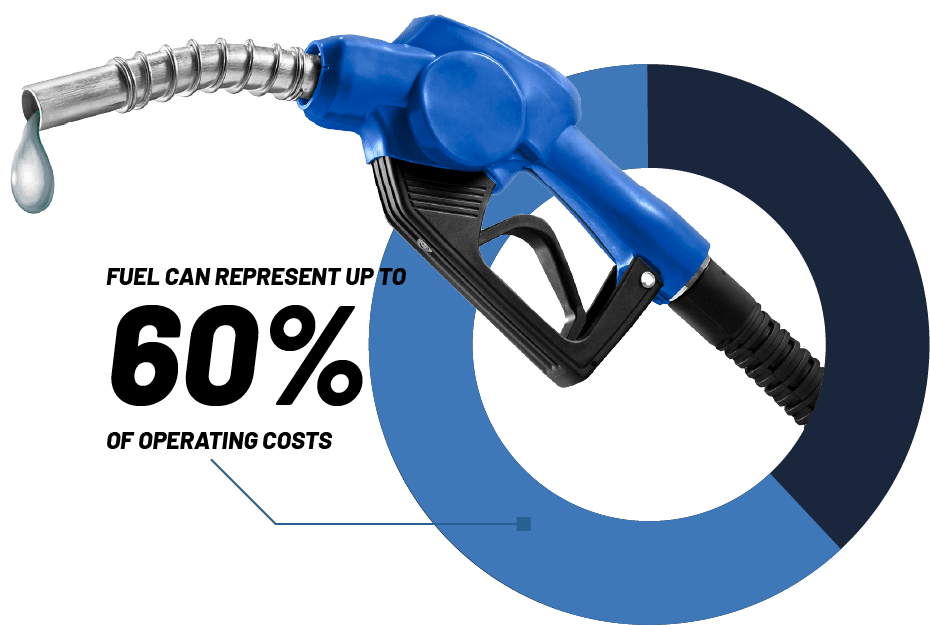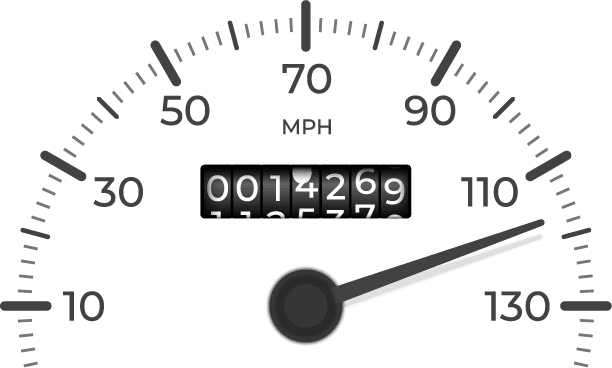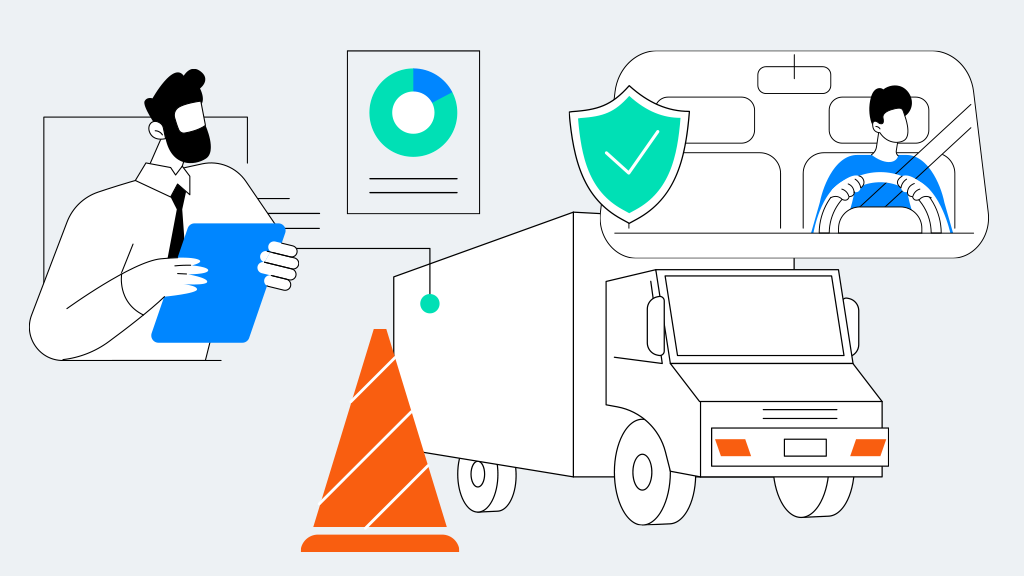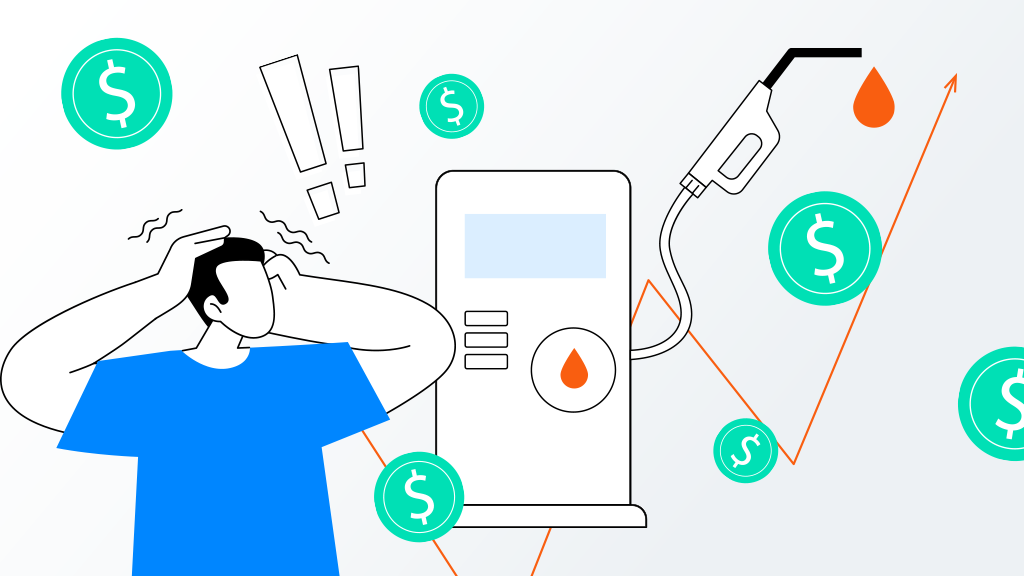The Primary Goals of Fuel Management
Better fuel management is one of the most common priorities for our customers, and fleet-driven businesses across the globe. When it comes to fuel management programs, fleets typically have a few primary goals in mind:
- Purchasing
Make the procurement process easier so that drivers are on the road faster - Tracking & Reporting
Track and report (internally and for IFTA regulatory compliance) on fuel transactions and consumption patterns - Driver Behavior
Identify opportunities to improve fleet efficiency by understanding driving behavior and vehicle performance - Theft
Eliminate fuel slippage or fraud
But despite this and the fact that fuel can represent up to 60% of a fleet’s operating costs, businesses often struggle to run effective fuel management programs. Many fleets turn to fuel card management systems to solve their fuel program woes.

Fuel card mangement systems come up short
A fuel card, is a payment card that can be used in the field to purchase fuel along with some vehicle maintenance costs. Fuel card management providers are essential components of a strong fuel management program, and most fleets can’t live without them. If you haven’t yet investigated getting fuel cards for your drivers, this is a good first step to levelling your program up.
But while fuel card providers promise to make fuel management easier, many fleets are quickly disappointed that they are coming up short of their goals. Fuel card solutions are good at solving for purchasing and reporting goals, but have some shortcomings that leave fleet managers struggling with driver behavior and theft.
Here’s 4 reasons why ⬇

Obstacle 01
You still must manually track and report odometer readings
To properly report on fuel consumption, you need to match card purchases with miles driven. Fuel card providers tell you when and where every transaction happens, but that still leaves you with the challenge of collecting odometer readings so that you can verify purchases.
Many fleets have a manual reporting process wherein drivers are required to give odometer readings weekly or monthly. But that leaves the fleet manager or controller with the unpleasant task of combing through odometer reports and matching them to fuel card records for each driver or vehicle. Even if you have access to a telematics platform, the process of connecting the dots is often manual, which leads us to challenge 2.

Obstacle 02
No connection between fuel card transactions and vehicle data
Beyond odometer readings, most of the opportunities for optimizing a fuel program rely on a detailed understanding of vehicle and driver performance data. How much are your vehicles idling? Are harsh driver behaviors such as speeding leading to inefficiencies? Are your vehicles really present at the station?
These insights typically come from two separate sources; a telematics platform and your fuel card provider. If you are missing one of the two, or have no way of connecting the data, you are faced with a difficult manual reporting process, or an inability to get at the insights you need to really deliver better fuel practices for your fleet.

Obstacle 03
You are stuck with large reports that are difficult to read
Many fuel card systems have rigid or complicated reporting systems. While the in-platform dashboards and charts provide at-a-glance reporting of fuel card trends, it can be hard to customize your reporting, and data exports are often hard to use in manual reporting processes.
You are often at the whims of the fuel card software provider, who regularly push unwanted updates to their platforms that can break existing reporting procedures that you had learned to live with.
Obstacle 04
Missing or blank data leaves gaps in reporting
Many users report that the spreadsheets they can export from their fuel card management system leave them with missing or blank data. This makes the reconciliation process even more frustrating. Any gap in data you can export means a gap in the insights you can glean from your fleet.
All of these shortcomings lead many fleet managers to get stuck in a pattern where they only have enough hours in the day to achieve the basics in their fuel management program: making purchases easier, and tracking overall costs for internal and regulatory compliance purposes.
What components make up a successful fuel management program?
Without the right technology, you’re stuck without the time or ability to get the most important fuel efficiency insights.
Fleet fuel exceptions you need to track:
- Vehicle not at fuel location – know the moment a fuel purchase happens without your company vehicle present.
Premium gas or incorrect fuel type for vehicle – Match the fuel purchase to the vehicle type and adhere to company policy around fuel type. - Excessive fuel for tank size – Catch fuel slippage by monitoring tank capacity and fuel purchase quantity.
- Excessive Fuel Purchases-More fuel pumped than what the tank can currently accommodate based on telematics data showing current tank capacity
- Fuel price doesn’t match cost in that state/county – If the costs are higher than the reported costs in a given area, you’re losing money
- Non-fuel purchases – Are drivers adding a little extra to their tab?
- Unauthorized use (outside company hours) – Make sure your policies are bing
Fuel management KPIs you need to track:
- Fuel
- Overall fuel cost per mile driven
- Over tank capacity
Premium fuel (non-regular) - Excessive idling
- After hours use (misuse, affects costs and could be indicating side work, vehicle wear and tear)
- Details
- MPG
- Non-fuel purchase
- Over transaction limits
- CPG
- Off route
- Alerts
- OT Capacity
- Gallons purchased with no tank capacity change/ inequal capacity change
- Non-fuel purchases
- Non reg fuel
- Over CPG zip code/radius avg



![Episode 50 Thumbnail Erin celebrates building the fleet community with 50 episodes and 11K followers on LinkedIn [Podcast]](https://intellishift.com/wp-content/uploads/2023/01/Cover-Image.jpg)


